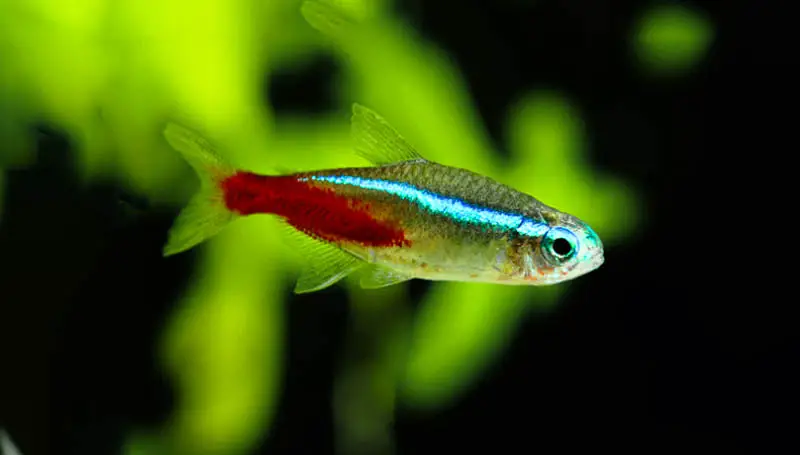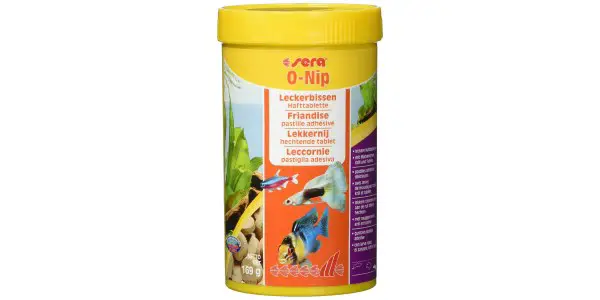5. Black Skirt Tetra
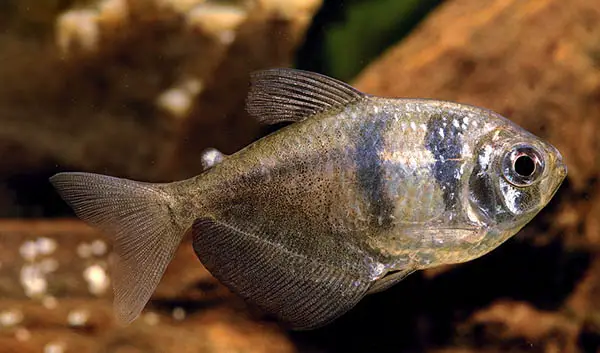
https://commons.wikimedia.org/w/index.php?curid=24680461
Black skirt tetra, or gymnocorymbus ternetzi.
The black skirt tetra, or in some parts of the world known as the black widow tetra, is readily available. Younger fish have an attractive black and silver color, but admittedly adults can be duller as the black naturally fades to a silvery gray as they age.
However, these fish come in a variety of other color forms. The white skirt tetra is a leucistic color mutation that cropped up in farm bred fish and said breeders quickly identified fish with that variation and selectively bred for it.
In addition to that, there are now also genetically modified GloFish versions in blue, yellow, green, and pink!
Considering how hardy these fish are, and the extra colors available, they are definitely an underrated tetra in my opinion.
I don’t recommend the selectively bred long finned strain of this fish, as they are quite nippy and will quickly make a mess of each other’s fins when kept in a school. And, generally, they should be kept in a school of at least six.
4. Glowlight Tetra
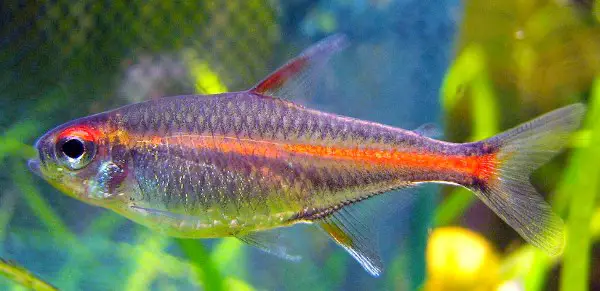
CC BY 2.0, https://commons.wikimedia.org/w/index.php?curid=12653369
Glowlight tetra, or hemigrammus erythrozonus.
I see glowlight tetras a really cute alternative to the neon tetra.
And they’re a direct alternative in almost everyway! They grow to the same size—four centimeters, or 1.5 inches for us Americans. Both the neon and the glowlight like a pH 5.5 to 7 but since both are farm raised and fully domesticated they aren’t too fussy about the pH. They both live around 5ish years! They have a similar diet too…
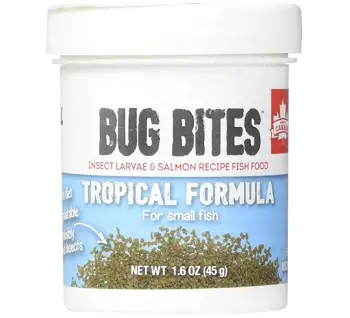
3. Black Neon Tetra
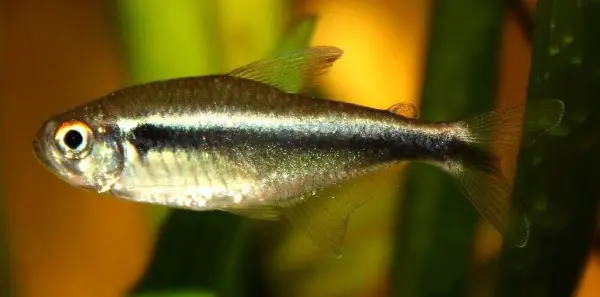
Black neon tetra, or hyphessobrycon herbertaxelrodi.
Again, you could see this as an alternative to the original red and blue neon. But, this fish has a little bit more to it.
Diet and water parameters might be the same as the neon and the glowlight tetra, but the black neon comes from a slightly different environment. In nature it can be found in clear streams with lots of submerged vegetation. This makes the black neon tetra ideal for a planted tank—it’ll be used to and appreciate the greenery, and it also won’t be too skittish in the bright lights.
2. Silver Tip Tetra
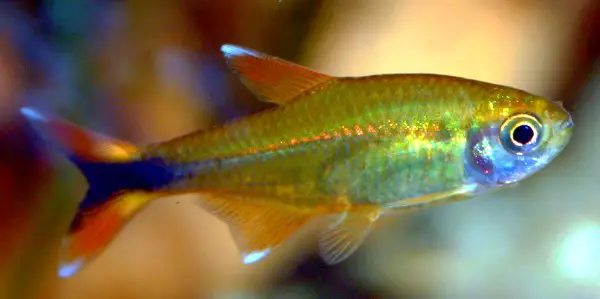
CC BY-SA 3.0, https://commons.wikimedia.org/w/index.php?curid=12653039
Silvertip or silver tip tetra. Scientific name: hasemania nana.
This is one of my favorite tetras. The first time I saw this fish in real life was in a friend’s fish tank. He’d told me repeatedly on the phone that they were awesome. He said he got them because they were the only tetras they had at the store and he wanted some schooling fish.
Anyway, like I say, he loved those fish and so did I once I saw them. They look kinda dull in static photos, but when they move together in a school the light colored tips on their fish really do almost shimmer and shine.
Beyond that, their behavior is delightful—they are very interactive and will respond to you being near the tank. They are also nice schoolers, they stick together in the tank to a pleasant degree.
1. Diamond Tetra

https://commons.wikimedia.org/w/index.php?curid=37001963
This is a young diamond tetra. As they mature, their body deepens and their coloration becomes more impressive.
Sure the Congo tetra and the emperor tetra sure are beautiful. I love the sight of a rummy nose school too. And cardinals? Pft. That red is incredible.
But to me, the diamond tetra is up there with the best tetras. Similar to the silver tip, it’s underwhelming in photographs and it shines in real life. Literally.
In person, the diamond tetra has reflective scales that catch the light and look incredible when the school move around your tank. They also possess an appealing body shape, they’re nice and chunky for a tetra, and on the large size.
Sera O-Nip Tabs And Tetras
In general, tetras are sometimes underrated. But, they can be so much fun in the right setup and with the right food.
Sera O-Nip Tabs are the perfect example. They provide a really fun way to feed your tetras. The food comes in little tablets, which you fix to the glass. Your tetras will then swarm the tablet and nip at it until it is all gone.
You can get them on Amazon here (affiliate link).
If Tetras Aren’t For You
If you’re looking for other fish to stock your aquarium then maybe you’d like to consider cichlids? Check out this article on how to neutralize their aggressive behavior.
Or maybe keeping some goldfish is a possibility? Check out this article on how their coloration works.
UPDATE: Notes On Tetras As Community Fish
In response to a comment from a reader, I’m updating this article with some extra notes about keeping tetras in community tanks.
Tetra behavior varies from one species to another. Depending on the circumstance, some of the fish on this list can be quite aggressive.
Specifically, skirt tetras, diamond tetras, and silver tip tetras can be very nippy.
If you want to keep these fish in a community tank you must keep them in an appropriately sized group. The common recommendation is six fish to a school. But, I’d advise more than that as a way of managing their behavior.
Keeping nippy fish (especially barbs and tetras) in larger groups will ideally focus their nipping on each other rather than your other fish.
Ensure that your tank has lots of decorations that break the line of sight between your fish. You need to provide your fish with places to hide from each other, even if it is just for a moment. With fish, it really is out of sight, out of mind.
Furthermore, some fish are ultimately just too delicate to be kept with nippy tetras. Male bettas are the perfect example. Many tetra species will bite at his fins.
When you’re drawing up your list of planned fish for any community tank, you should find out as much as you can about each species. Nature has no respect for our categorization of fish as “community fish”. Every species, and sometimes every individual fish, is different.
So, keeping that in mind, you should be prepared to observe new additions to your community tank; and be ready to rehome any fish that don’t fit in.

